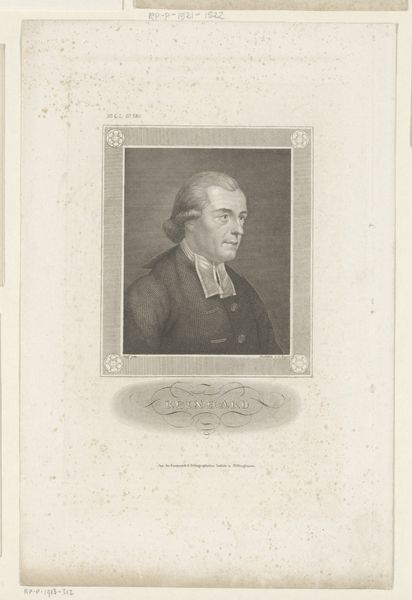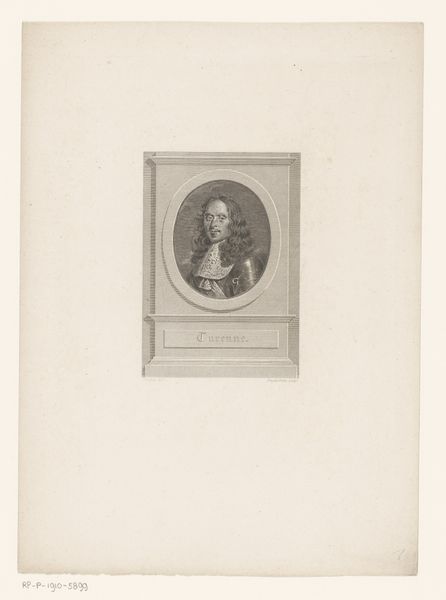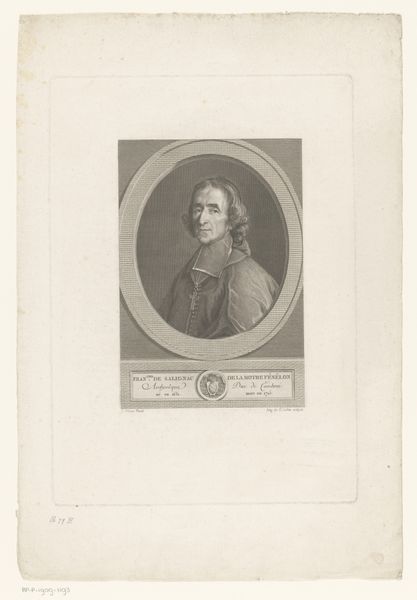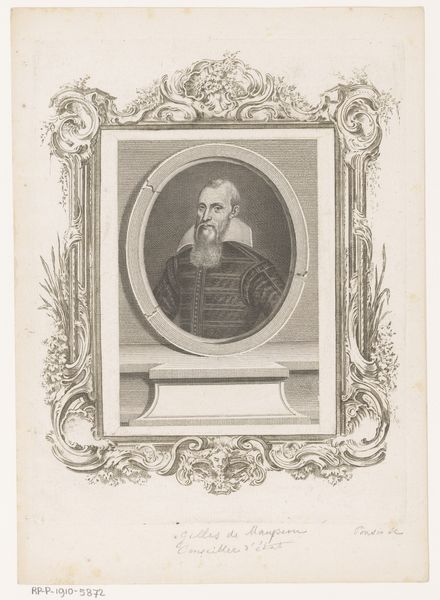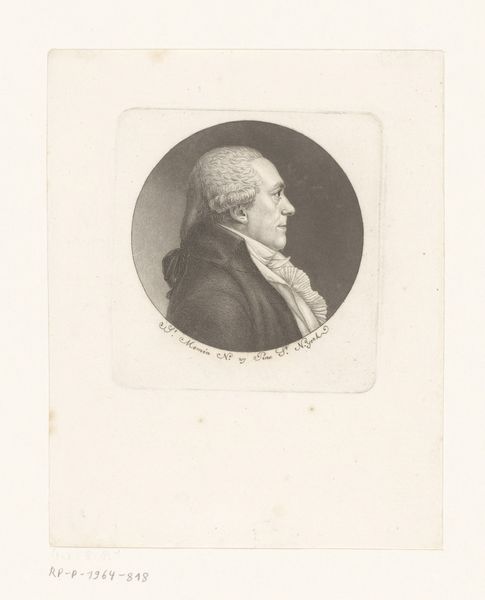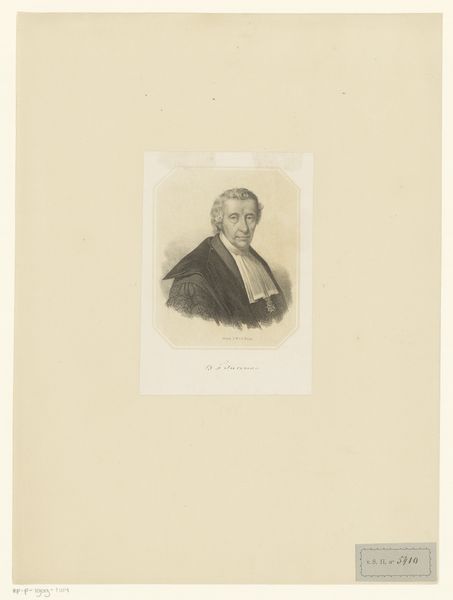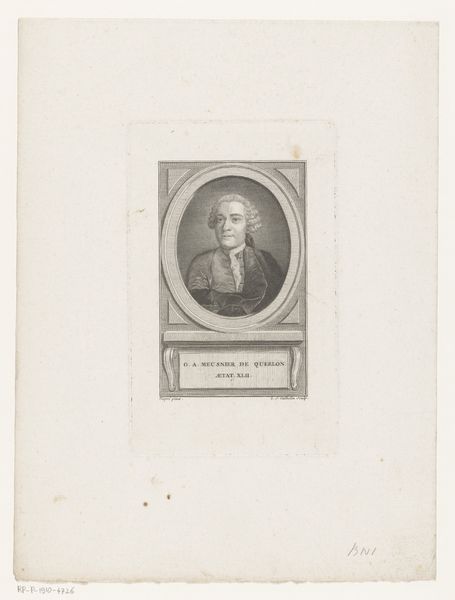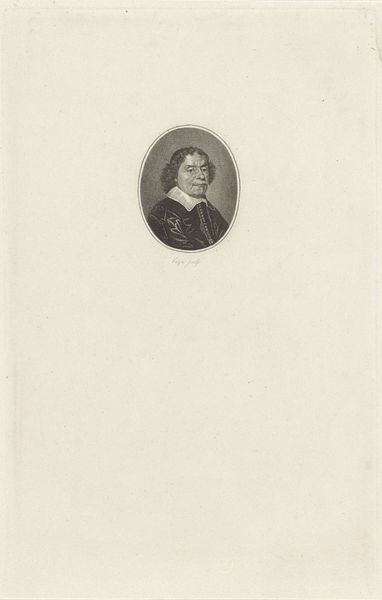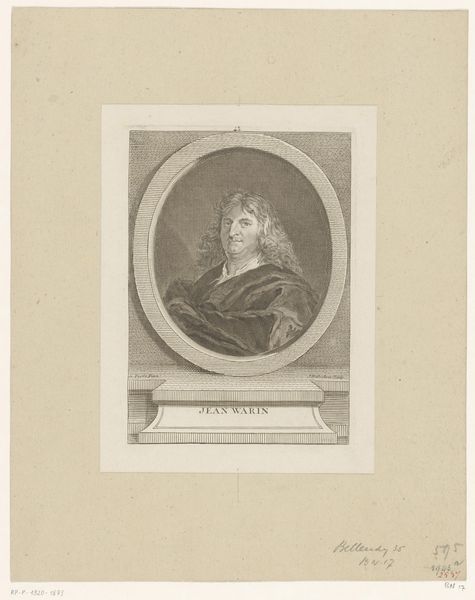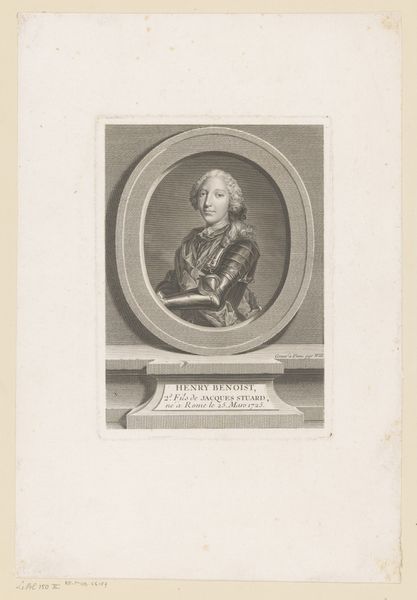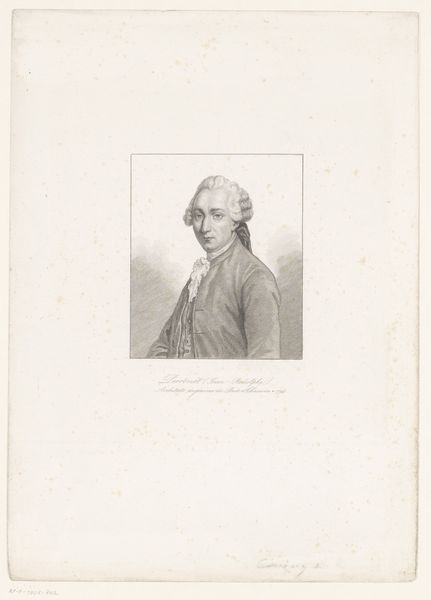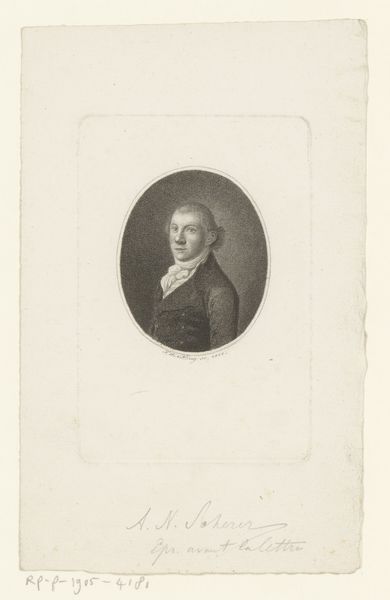
print, paper, engraving
#
portrait
#
neoclassicism
# print
#
old engraving style
#
paper
#
history-painting
#
engraving
Dimensions: height 109 mm, width 64 mm
Copyright: Rijks Museum: Open Domain
Curator: Here in Gallery 12 at the Rijksmuseum we're viewing an engraving titled "Portret van Claude-Emmanuel Lhuillier," crafted sometime between 1778 and 1787 by François Robert Ingouf. The print, rendered on paper, reflects the Neoclassical style of the era. Editor: Wow, so detailed! It's almost haunting, this face staring out from inside that oval frame. He looks a bit... skeptical? Curator: The historical context is essential. Ingouf was capturing the likeness of Claude-Emmanuel Lhuillier, also known as Chapelle, likely commissioned to commemorate his social standing. Engravings like these were crucial for disseminating images of influential figures across society. It is so fascinating to observe this method before photography becomes more relevant! Editor: He seems contained, you know? Like a spirit trapped within a cameo. I imagine the scraping of the engraving tools, so precise. The contrast of black ink and white paper almost mimics his restrained yet lively character, no? Curator: Absolutely. There's a visual language being deployed, the Neoclassical fondness for order and clarity serving as a mirror to the societal emphasis on reason during the Enlightenment. Consider the rise of the bourgeoisie, and the emphasis that artists would make to represent a modern view of its patrons. Editor: It does scream order. And yet, the more I stare at him, the more I want to scratch at those lines! Deconstruct the stoicism just a tad... expose some hidden emotion, you know? That gaze hides secrets, surely. Curator: Consider this portrait alongside broader discourses of power and representation at that time, we can examine how portraits reinforced particular hierarchies. But yes, this particular expression adds a dimension that makes us ask further questions about Lhuillier. Editor: Yes, so as you analyze art history and these social commentaries of the Neoclassical style, I find myself trapped in this beautiful face. He lives inside, or maybe he comes back from time to time to haunt our museums! Curator: A pertinent perspective. In observing the style and relating the character back to us, he also lives again in a modern and refreshing light. Editor: Well, thank you. Maybe there will be a few more that return when we talk!
Comments
No comments
Be the first to comment and join the conversation on the ultimate creative platform.
